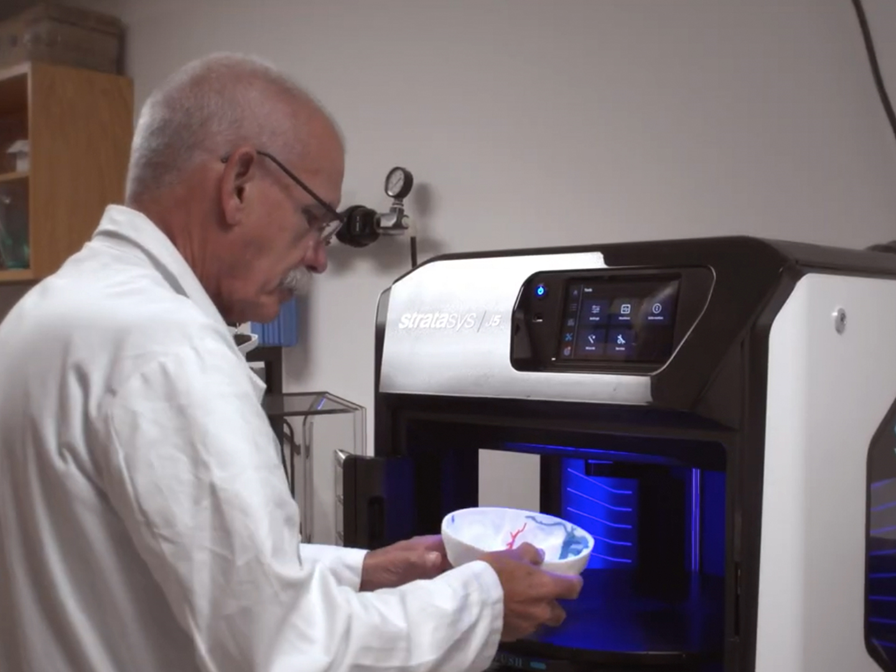At Nicklaus Children’s Hospital in Miami, the Cardiovascular Surgery Advanced Projects Laboratory (APL) uses a range of digital 3D technologies, including Stratasys 3D printers, to visualize anatomy and plan surgical procedures for pediatric patients. A previous case study featured Nicklaus Children’s application of 3D printing to help repair a child’s heart, showing the great potential using of anatomical models in clinical settings. The latest Nicklaus Children’s success story involves planning a life-saving operation for Roy, an 8-year-old boy with a difficult-to-treat tumour.
3D printing the skull using the Stratasys J5 MediJet
In Roy’s case, Nicklaus Children’s surgeons, as part of a multidisciplinary team, had to plan for a very complicated and difficult case in which a potentially lethal cancer, an osteogenic sarcoma, was situated in a region where surgeons typically don’t operate. However, Roy’s case was an excellent opportunity for Robert Hannan, MD, the Director of APL, to realize the Laboratory’s goal to “bring hope and the future to patients and families over the course of a lifetime.”
Jordan P. Steinberg, MD, Surgical Director of the Craniofacial program, described how “a lot of the motivation behind the way in which we approach this, is to figure out a way that we could get to this (the sarcoma), but yet put things back together to allow for minimal disturbance in his appearance.” Help was obtained from John Ragheb, MD, Director of the Department of Surgery at the hospital, to help surgeons locate the tumour, which sat underneath the brain and under the eye in a difficult, but not impossible, location to reach.
The team at APL assisted in preparing for the surgery by using Synopsys Simpleware software to import and segment imaging data of Roy’s skull, relevant anatomical features, and the tumour. The resulting segmented data was then manufactured using a Stratasys J5 MediJet printer into a diagnostic medical model*. For Dr. Ragheb, “this model was really very helpful for us to envision how to reach the tumour,” which was highlighted in pink. The tumour was eventually and successfully removed, mostly through the child’s mouth, which enabled the team to avoid a disfiguring scar. The technique involved making a skin incision behind the hairline and opening a portion of the skull, then removing a small section of the cheek so the surgeons could see the tumour directly from above.
In addition to the 3D printed model, the data was also imported to the Augmented Reality (AR) tool DICOM Director Intravision XR for viewing through a Microsoft HoloLens 2, allowing Roy and his family to virtually interact with the skull and better understand the surgery. According to Dr. Steinberg, “with these technologies now, we’re able to really show them and to pinpoint exactly what we’re doing, what are the nearby structures that we are dealing with, communicating the level of risk and benefit in a way that we really simply could not do before.”
Watch Full Video:
*Synopsys Simpleware software has FDA 510(k) clearance to go from DICOM data to image processing and export of files for 3D printing using Stratasys printers such as the J5 MediJet. Simpleware software has been validated with Stratasys printers and materials for select anatomies, and makes it straightforward for Stratasys users wanting to use diagnostic medical models from patient-specific images”

